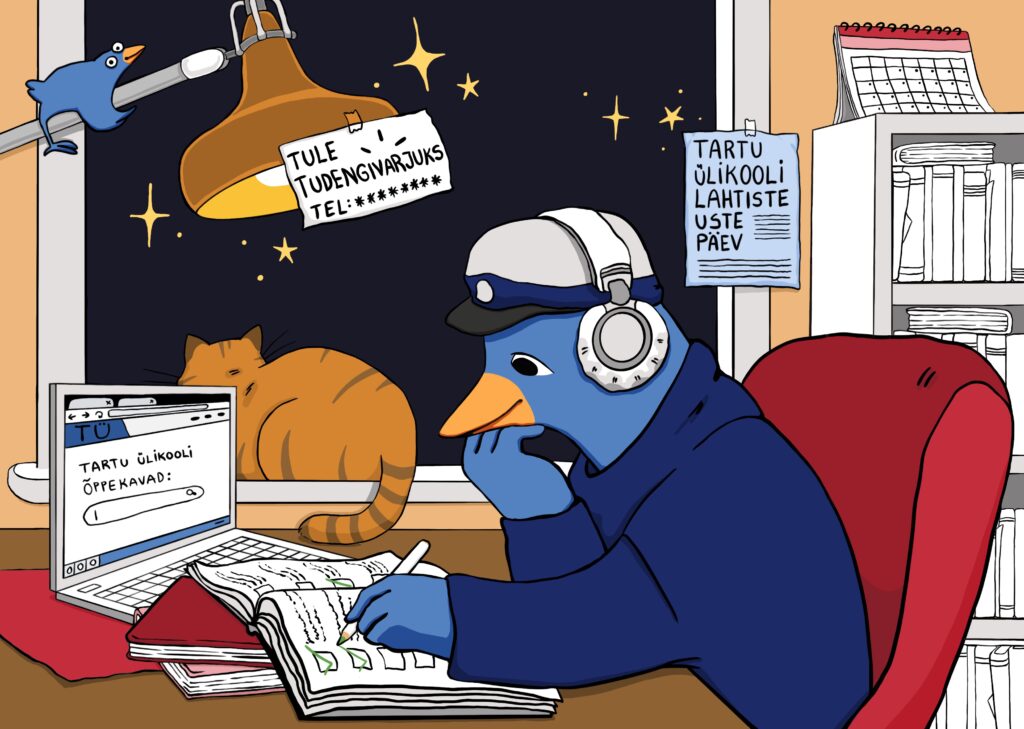- Career Hub
- Future Skills
- Academic planning
- Planning further studies
- Planning your studies
- How to manage your studies?
- How to plan for your studies?
- How much freedom do you have to modify your studies?
- When to make learning choices within the curriculum?
- How little or how much can you study?
- How can you concentrate on and manage the time of studies?
- How to change specialisations?
- How to study well?
- Internship
- International experience
- Work-life development
- Act and grow
How to choose a field of study and an educational institution?

When choosing the field of study, it is useful to know your goals, as it helps you study purposefully. In difficult moments when you cannot, don’t feel like or don’t want to do anything, reminding yourself of your goals helps you find the inner motivation to strive to cope with your studies and enjoy them.
| Time to reflect What could you think about and do to get ideas and confidence for choosing your field of study? |
How to make an informed choice of the field of study?
Once you know what interests and suits you, it is easier to find your field of study. If you still have doubts, consider the following questions.
- Which topics and activities interest you the most?
- Which skills and experiences have you already acquired?
- What don’t you like to do?
- What are you like, and what are your strengths?
- What do you consider important in life, and what are your dreams?
- What would you definitely want to develop in yourself?
- What motivates you to (continue to) study?
Estonia has over 50 universities, professional higher education institutions and vocational schools, all offering numerous study opportunities. For example, the University of Tartu has more than 50 bachelor’s and professional higher education curricula and more than 80 master’s curricula. Adding study abroad opportunities makes the overall picture even more complex. It is really difficult to keep up to date with all the opportunities.
Therefore, first try to get a general overview of the educational institutions and curricula and then focus more thoroughly on the fields you are interested in. Also, explore where and in what roles the acquired knowledge can be applied in the labour market.
Consider the following questions.
- What institutions offer the fields of study you are interested in?
- What exactly do you study in these programmes? Explore the descriptions of the curricula. For example, see the curricula offered by the University of Tartu.
- What are the admission requirements? Do you meet them?
- When do you have to submit the application and other necessary documents?
- What entrance exams or tests do you need to take?
- What was the competition for your chosen programmes last year?
- Which programmes would you get in most easily?
- What are the labour market applications of the specialisations you are interested in?
It is useful to know the job market prospects.
- Read the OSKA reports on the labour market and future trends. Which sectors are expanding, which occupations are in demand, and which are in excess?
You may also use other ways to gather information.
- Go student shadowing at an educational institution to find out what student life is like.
- Attend the open doors days at higher education institutions.
- Participate in other events and information sessions that introduce study opportunities.
- Shadow a representative of an occupation of your interest.
- Participate in study visits to companies.
- Discuss study and job opportunities with family, friends, and acquaintances.
When planning, it is essential to link your interests and goals with the opportunities in education and work. Consider the following questions.
- What is the goal of your studies?
- Which study opportunities best match your interests and future plans?
- Which form of study is more suitable for you: do you prefer regular or block mode study? Do you need a degree-study curriculum or a continuing education programme?
- What can you do to get information: what would you like to study, where to participate, who to talk to? When will you do what?
- Which opportunities have you shortlisted, and how do you choose between them – what is your first choice, and what are plans B, C, D and E?
- What do you need to do to apply, and when? How can you prepare for that?
- What is your action plan and schedule?
- What supports and what hinders your plans? How to overcome the obstacles?
- Where and from whom can you get the help and support you need?
Purposeful action helps implement plans and achieve results. A good idea to write down your thoughts in an action plan. Also, consider the following questions.
- What are the specific steps you write down in your action plan?
- Do you act and communicate boldly when implementing your plans and finding new opportunities?
- What kind of support may you need, and who can provide it?
You can discuss all these topics with the career counsellors of the Unemployment Insurance Fund or the educational institutions. Click the button below to book an appointment with the career counsellor of the University of Tartu Counselling Centre.
NB! The form is in Estonian, please use Google translate for translating the form.
